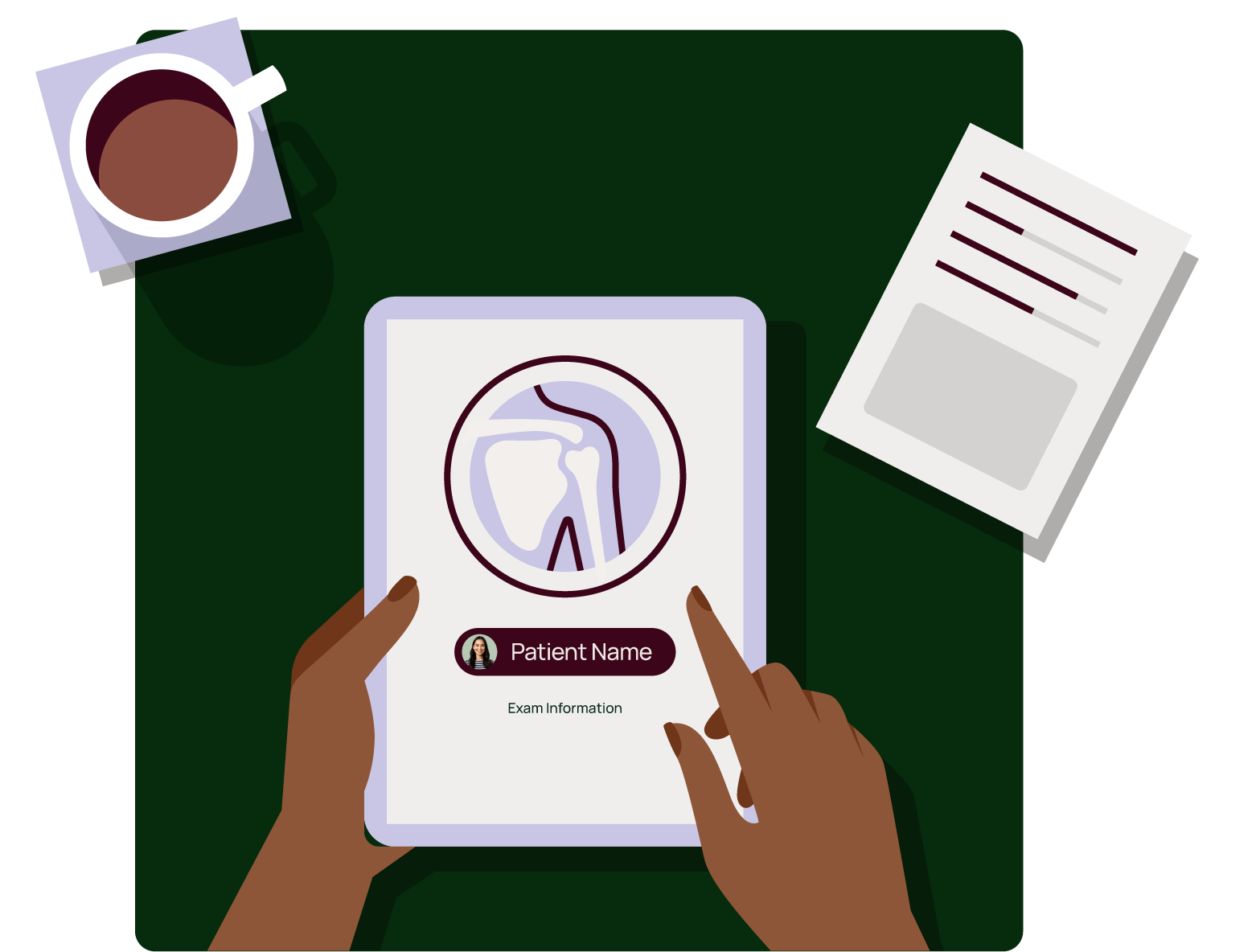Healthcare is being increasingly driven by digital transformation, and picture archiving and communication systems (PACS) have become the backbone of efficiency in modern radiology. From their roots in digitizing radiological film, PACS have evolved into sophisticated, enterprise-wide imaging solutions. Today, if your hospital isn’t fully leveraging a modern PACS, you’re not just behind in technology, you’re missing a critical piece of clinical strategy.
With the rise of data-driven diagnostics, AI integration, and remote consultations, PACS systems have moved from being supportive tools to becoming foundational infrastructure. This evolution demands attention for what PACS have been, and for what they are rapidly becoming.
The History of PACS: From Siloed Systems to Foundational Infrastructure
The concept of PACS was born in the 1980s as a way to digitize and store medical imaging, replacing cumbersome film archives with digital files accessible via computers. Early PACS implementations were largely siloed. Radiology departments would operate standalone systems that weren’t fully integrated with broader hospital IT infrastructures. Images were captured, stored, and viewed within isolated networks, and interoperability was minimal.
Key standards like digital imaging and communications in medicine (DICOM) emerged to enable image exchange between modalities and PACS, but integration hospital information system (HIS) and radiology information system (RIS) lagged behind. Most PACS simply received, sent, and stored DICOM files, with manual backups and minimal communication with other systems.
This siloed architecture worked at first because radiology departments could digitize film and streamline image access locally. But as imaging volumes grew and clinical workflows became more multidisciplinary, these isolated systems started showing their limitations.
The inability to seamlessly share imaging data across departments or between facilities became a bottleneck for coordinated care, especially as healthcare organizations expanded geographically, acquired new outpatient clinics and affiliates, and radiology practices trended toward consolidation into larger health systems.
Even as PACS matured in storage capacity and image management, it became clear that new architectures were needed to break down the walls between imaging and the broader healthcare enterprise. This realization laid the groundwork for the next evolution: enterprise imaging.
How Rising Imaging Volumes Changed the PACS Game
As hospitals expanded and clinical care became more interconnected, the limitations of siloed PACS became impossible to ignore. The traditional PACS, designed to serve primarily the radiology department, couldn’t keep up with the growing complexity of imaging across multiple specialties and care settings. Modern healthcare requires imaging not just in radiology, but in cardiology, oncology, orthopedics, dermatology, and even surgery, each with its own modalities, image types, and data requirements.
At the same time, imaging volume exploded. The rise of multi-slice CT, MRI, PET, and other high-resolution modalities produced massive datasets. Clinicians outside radiology also wanted direct access to imaging for faster decisions and collaborative care.
Beyond technological advances, broader healthcare trends also fueled imaging demand: an aging population increased the prevalence of chronic conditions requiring imaging for diagnosis and monitoring; expanded insurance coverage improved access to imaging services; and the practice of defensive medicine led physicians to order more imaging studies to mitigate liability risks. Together, these factors contributed to escalating imaging volumes, exposing the fragmentation inherent in siloed PACS systems.
In response, hospitals began to pursue enterprise imaging: an approach that treats imaging as a unified service across the organization rather than a radiology-specific function. Enterprise imaging builds on PACS technology but extends it, integrating imaging data from multiple specialties into a central repository that interfaces with the electronic health record (EHR), enabling image sharing across departments and even across organizations through regional health information exchanges.
The goal is no longer just “storing images” but delivering the right image, to the right clinician, at the right time, regardless of where it was acquired. This shift paved the way for deeper integration, collaboration, and data-driven care—laying a foundation for AI-assisted diagnostics, advanced analytics, and patient-centered imaging workflows.
What Does a Modern PACS Include?
Today’s PACS have evolved far beyond digital image storage. A modern PACS functions as an integrated imaging platform, combining storage, distribution, visualization, and increasingly, intelligent analysis. At its core, a PACS still consists of four foundational components: imaging modalities, a secure network for image transmission, workstations for interpretation, and archives for short- and long-term storage. But layered atop these basics are new technologies transforming how imaging supports clinical care.
One key shift is the push toward interoperability. Modern PACS are designed to integrate seamlessly with HIS, RIS, and EHRs, enabling imaging data to flow across departments and care sites. Standards like DICOM and HL7 have made this possible, but the focus today is on enterprise-wide integration: breaking imaging free from departmental silos to become accessible across the continuum of care.
Cloud technology is another defining feature of today’s PACS. By moving storage and computing to the cloud, hospitals can reduce on-premise hardware costs, scale storage dynamically, and enable remote access for radiologists and clinicians across locations. Cloud PACS also facilitate disaster recovery, backup, and offsite image sharing without the bottlenecks of legacy VPN solutions.
The most exciting evolution is the incorporation of artificial intelligence (AI) into PACS workflows. AI tools are increasingly embedded within PACS platforms to assist radiologists with image interpretation, triaging critical findings, flagging incidental findings, and automating routine measurements or reports. Rather than adding AI as a standalone product, modern PACS are weaving AI into the reading workflow to improve efficiency and diagnostic accuracy.
These innovations signal a broader transformation. PACS are no longer passive storage systems; they are active engines for digital health, driving faster diagnosis, better collaboration, and more personalized care.
The Future of PACS
While many healthcare organizations are still imagining what the future of PACS could be, solutions like IntelePACS® are already delivering it. Today’s most advanced PACS aren’t just storage and retrieval systems, they’re intelligent, integrated, and clinician-centered platforms designed to enhance care delivery across the enterprise.
At the core of IntelePACS is InteleViewer™, a powerful diagnostic viewer offering AI-powered, customizable sequence protocols and intuitive workflows tailored to each radiologist’s preferences. This flexibility helps radiologists work more efficiently, with consistent layouts that adapt seamlessly across different modalities and studies.
Perhaps most transformative is InteleGence™, Intelerad’s AI-integration platform that connects radiologists to an expanding ecosystem of AI tools from leading vendors. Rather than relying on a fixed AI suite, InteleGence allows healthcare organizations to continuously adopt new AI innovations as they emerge, whether for triage, detection, quantification, or workflow optimization. And because these tools are fully embedded within InteleViewer, radiologists don’t need to leave their familiar environment to benefit from AI insights. The result is an AI-powered workflow that feels natural, seamless, and adaptable to each practice’s evolving needs.
IntelePACS is cloud-enabled, powering scalable storage, disaster recovery, and remote reading without sacrificing performance or security. Its interoperability ensures seamless integration with RIS, EHR, and third-party systems, supporting enterprise imaging strategies across multi-site and growing healthcare networks. With a flexible hybrid deployment model, IntelePACS allows organizations to combine cloud and on-premise infrastructure to meet their unique clinical, regulatory, and IT requirements or to execute a cloud transition at their own pace.
For many providers, these features are essential for keeping pace with rising imaging volumes, staffing challenges, and the push toward value-based care. Choosing a PACS like IntelePACS solves today’s challenges, and it’s also an investment in a platform that will continue to evolve. With its open AI ecosystem, vendor-neutral flexibility, and commitment to continuous innovation, IntelePACS positions healthcare organizations to stay at the forefront of patient care, no matter what comes next.
Learn more about IntelePACS and how it can deliver the innovation, intelligence, and flexibility your imaging strategy needs by booking a demo.





